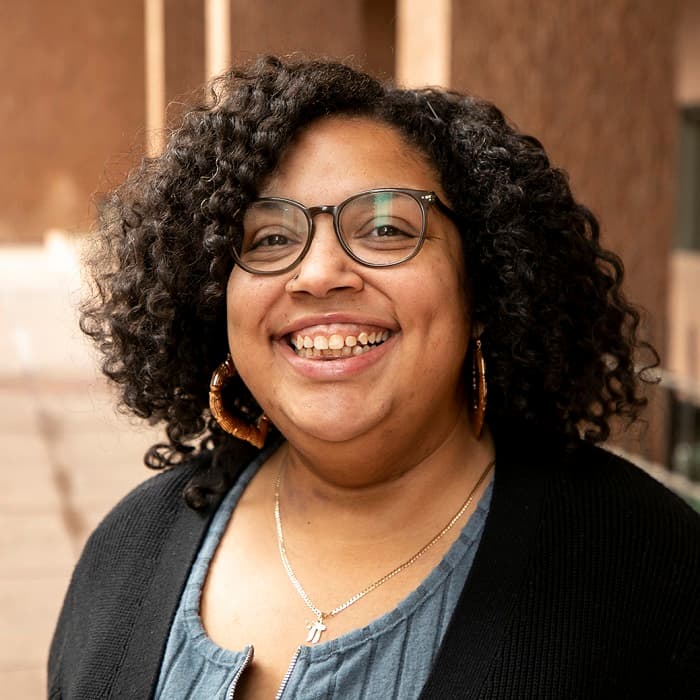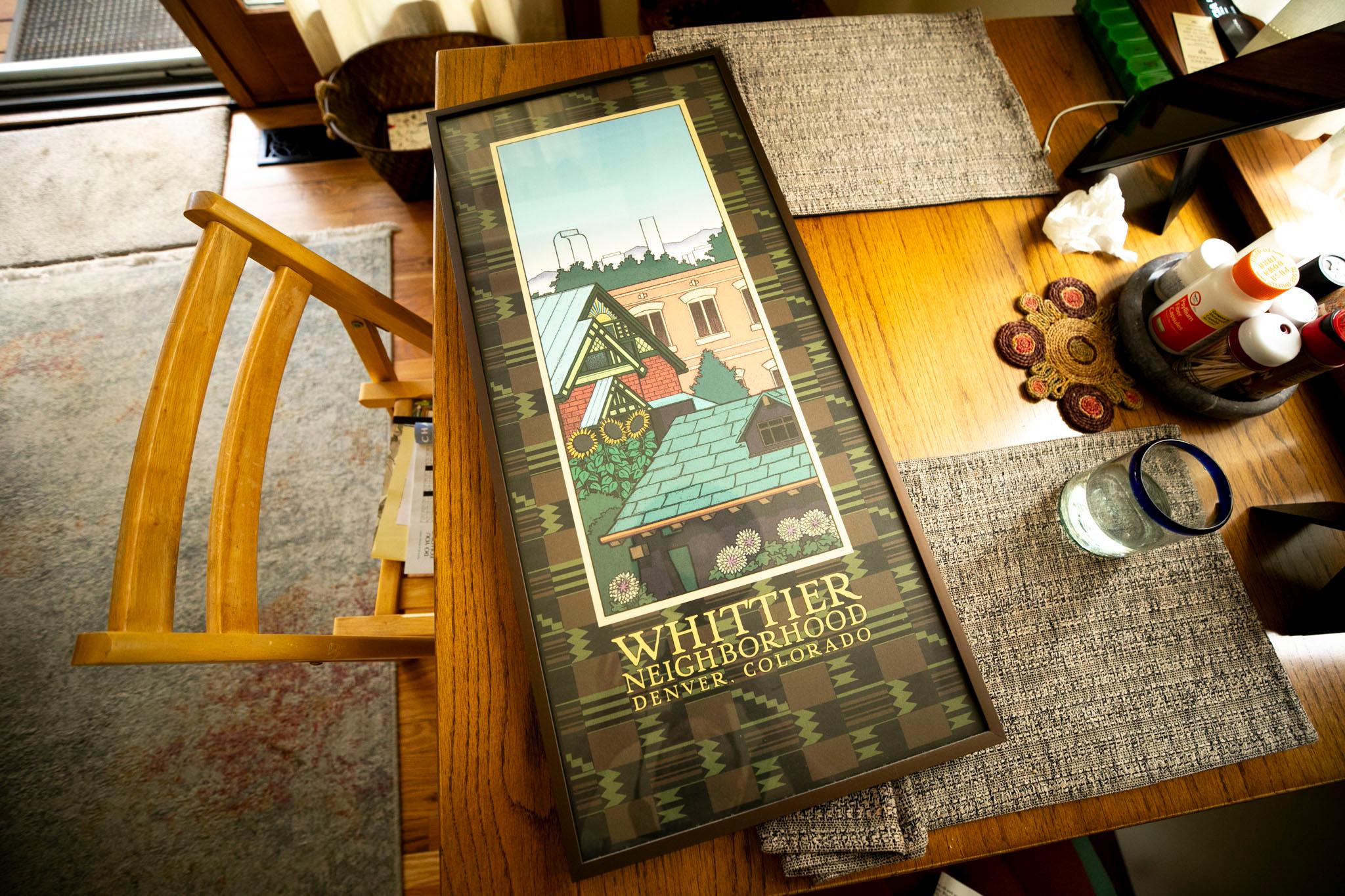In the alleyway behind Abby Hinga’s Whittier home, there’s an odd corner created by hers and the neighbor's fences.
It can become a catchall for rubbish and random things, especially when it’s super windy outside. The alley becomes a wind tunnel, and the corner becomes a net for whatever isn’t tethered.
In early May, after a wind storm threatened to blow Denver off the map, Hinga was clearing the space. She picked up a piece of cardboard to chuck it in the bin .
Then she looked closer.
It was a poster. Crumpled here and there, with rips and tears, but a poster nonetheless. It depicted a clear image of flowers, a skyline, an African print border, houses and, smack in the bottom middle, the title: “Whittier Neighborhood. Denver, Colorado.”

“I literally was going to throw it away because it was pretty damaged,” Hinga said. “But once I looked at it … We have similar type posters that will advertise a festival or a walking market … but this didn’t have a date on it. I thought it was really cool.”
Hinga went to work repairing the poster, flattening it out, and getting it framed.
But she was still curious. She’s lived in the neighborhood for about 12 years and had never seen the poster before. What kind of poster was it? A cool neighborhood depiction for sure, but why does it exist?
She took to the Whittier Neighborhood Association Facebook group to find out.
She ended up receiving a most serendipitous 23-year-old history lesson involving a graphic designer who loves his neighborhood and a community that continues to strive for connection.
'Oh this is Whittier. They have a cool poster'
Phil Normand, an artist and 40-year Whittier resident, is the creative mind behind the poster. He designed it as a brand for the neighborhood, an incentive to get people to join the RNO and a visual history lesson of Whittier.
“I thought it would really be cool if we had a poster that represented the whole neighborhood that people could get at the meetings. They could hang it in their house and people would come by and say, 'Oh this is Whittier. They have a cool poster,'” Normand said. “It would also say, look, this neighborhood has been here for a long time. It has a history.”
Normand and his wife Pat moved to Whittier in 1984 and soon joined the neighborhood group, which was started in 1981.

But there were problems. Normand said he felt that the neighborhood was being ignored. Police wouldn’t come to their meetings and city leadership didn’t respond. Membership of the neighborhood group began to falter.
In the early 90s, Normand said the group dwindled down to three people: him, Jon Jones and a Mrs. Reid. Both convinced Normand to become president of the organization and he, reluctantly, agreed.
That was the start of the group’s revitalization, and it rededicated itself to getting the neighborhood what residents wanted. Normand and the group started the Whittier Neighborhood Spotlight, a small newspaper to keep residents informed and together.
The group’s membership increased, along with that community bond.
Let’s head back to 2001.
Normand was toying with poster design in his spare time.
He wanted to put something together for the neighborhood, a visual representation of Whittier’s historic community.
He began with a border based on a Kente cloth design called “Abusua ye dom,” which means “the extended family is a force.” It both represents the Black community members who have long called Whittier home and the core idea of what a neighborhood is: an extended family.
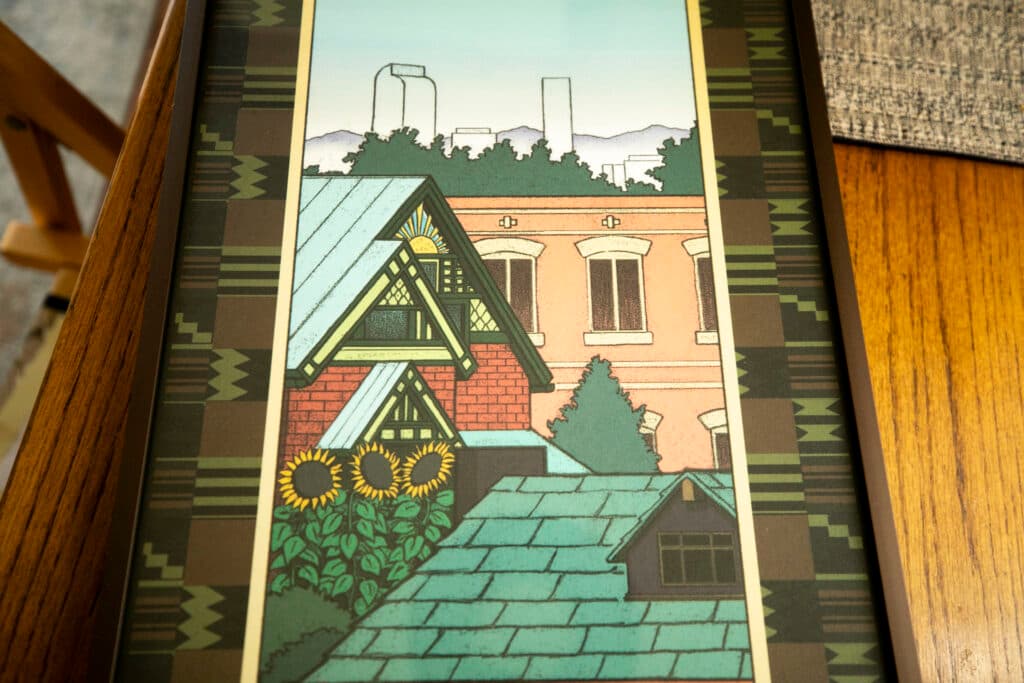
Kente is a West African, specifically Ghanaian, textile worn originally by royals. The gold, red, green, purple and black colors in the fabric each represent something, from fertility to passion, renewal to spiritual awareness.
Next, he added buildings. Normand chose the Victorian-style houses, bungalows and flat-top homes seen on almost every block of Whittier.
Normand said the houses also represent the workers of the neighborhood who were bricklayers and carpenters. (See the history of Manual High School!)
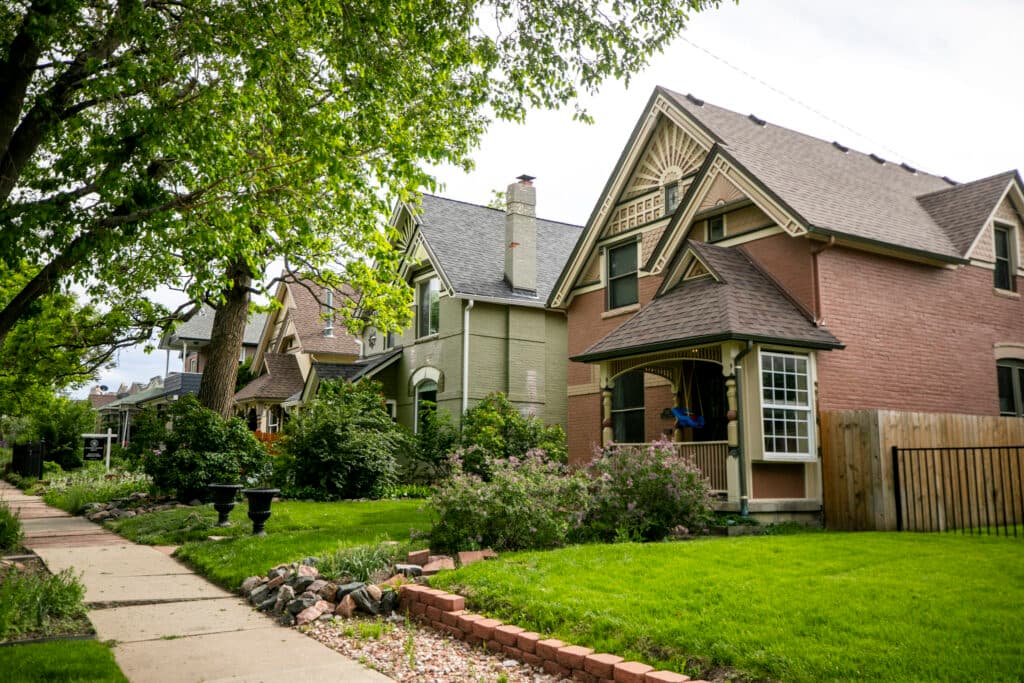
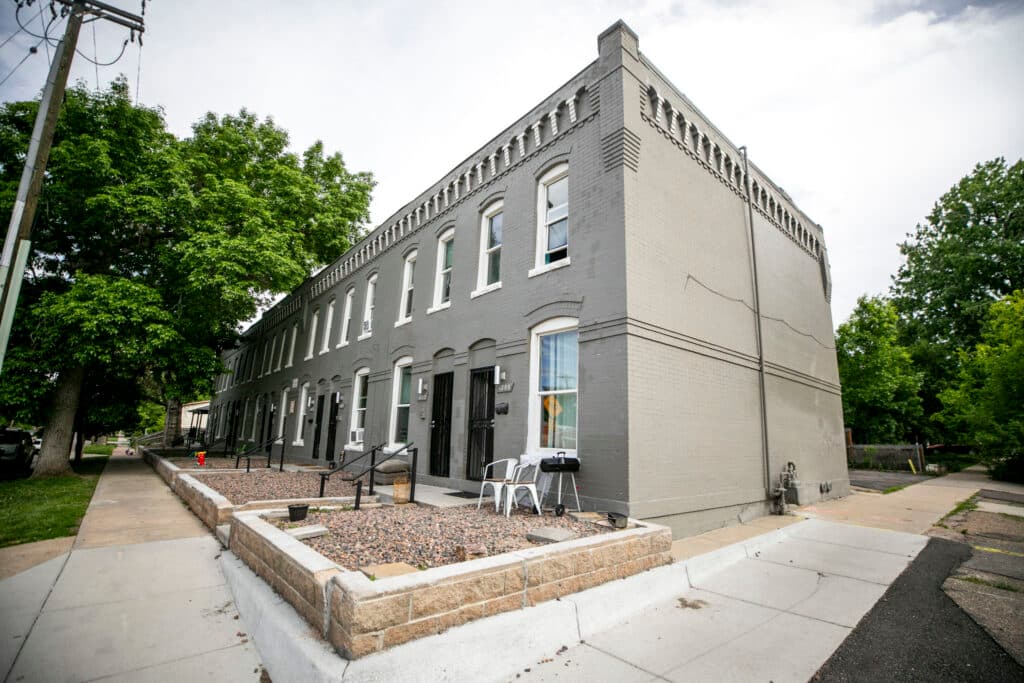
Then Normand threw in flowers. Chrysanthemums to represent the Asian community and sunflowers for the Hispanic community.
The RNO received a grant from the Denver Foundation to print the posters. Given the vertical rectangular shape, the group used the extra paper to also print bookmarks and postcards.
Here’s some of what the postcards read:
"The Whittier poster celebrates the diversity of our neighborhood with motifs which represent the peoples that have maintained and lived in it … It is the multi-racial and integrated character of Whittier that gives it such a unique history, a history to be aware and proud of."
They made 1,000 copies. That’s it. No reprints.
And that’s the story of a 23-year-old poster that narrowly escaped an untimely death in a trash bin.
“You know, people throw away all kinds of wonderful things,” Normand laughed.
It’s unclear how the poster came to be in Hinga’s alley (besides the wind factor). Maybe it flew out of someone’s garage. Maybe someone meant to throw it away.
But she’s happy that the universe chose her as its next owner.
“I've never really lived in a neighborhood with this much rich history,” Hinga said. “Denver in general is changing to a point where we have people coming from out of state to buy homes here that are pushing other people out. It's unfortunate. Extremely unfortunate … So, it’s important to be knowledgeable and respectful of the space … Seeing Phil’s poster, seeing how even flowers can represent different communities. It makes you more aware of the importance of the history of this neighborhood.”
Hinga’s also glad her post in the Whittier Facebook group generated so much discussion. Some folks showed off their own posters in ornate frames. Others made requests for a copy. (There are more out there — if you know you know.)
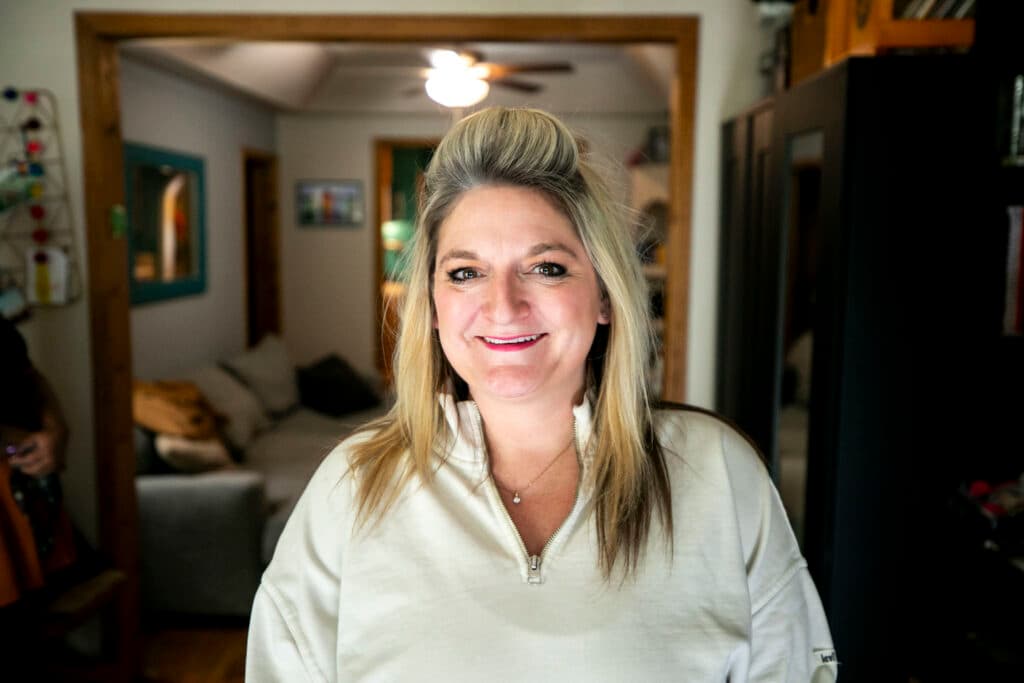
"It’s been really neat. The community that was created in the post with people wanting a print," Hinga said. "Phil has been brought into the spotlight for his art again. When you know the history of the different families and the deep history within this neighborhood, it's absolutely beautiful to look at."
Normand said he’s happy about the resurgence.
“I'm humbled that people really like the art because it's so old, you know,” Normand laughed. “It's not really very hip, but you know, it's there … Here's our brand. This is the brand for Whittier and the brand is, 'Everybody gets to be in there.'”
He added that if he could redo the poster, he would add a little something for the small Jewish population that once called Whittier home, though he’s not sure how he’d represent the group.
He also said he may be enticed to create a new poster if asked, but this one still suffices.
'Making community I think is very much a matter of people just getting to know people'
The poster was created to be a brand. Still is. The poster was created to bring people to the neighborhood group. Hinga said it sparked that interest in her.
She’d been thinking of joining the RNO and being more involved, and the poster is pushing her toward that step.
It also brought a few people in for a recent RNO meeting where board members were, unintentionally, discussing what community means to them. Normand piped up and said that community can simply be saying hello to your neighbor.
“Making community I think is very much a matter of people just getting to know people. Get to know the people on your block. You don't have to interact with them all the time. You don't have to invite them over to your house for dinner. All you have to do is get to know them and say hi to them from time to time,” he said.
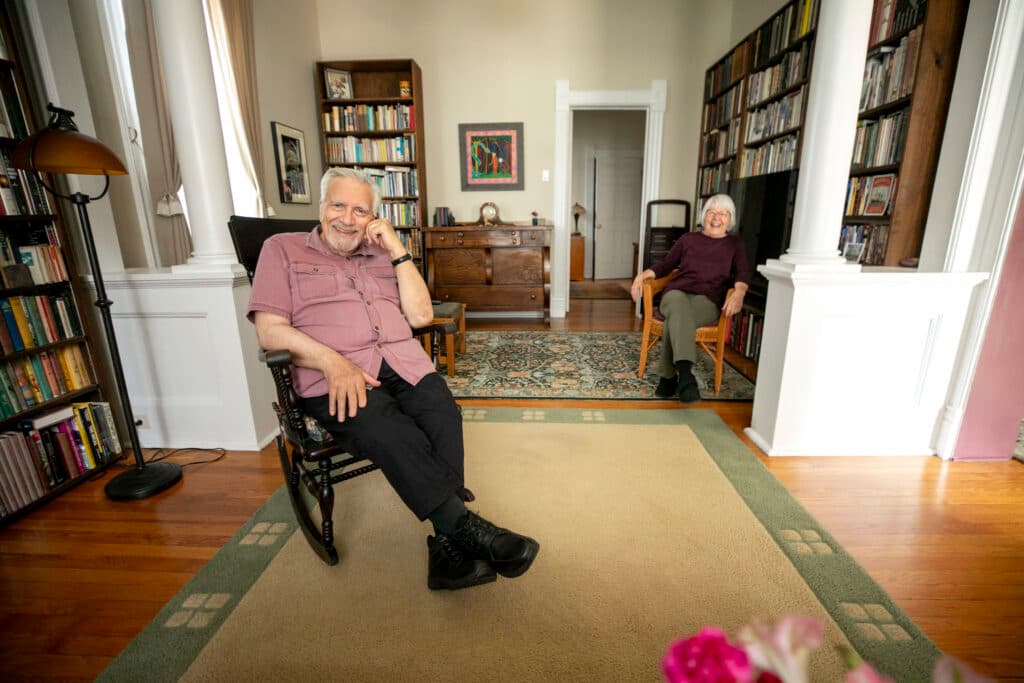
Or, creating a timeless poster that people still revere.
And speaking of the found poster, it’s hanging lovingly in the front entrance of Hinga’s home. When she posted in the Facebook group, she was a bit worried that someone would claim the poster (she says she would've returned it).
But now, it’s finders keepers, baby.
